Living up to the moniker The Home of American Golf is a tough proposition yet Pinehurst pulls it off with panache. In more ways than one Pinehurst stands with St Andrews as one of the most prominent of golf locations. Not only does each share a common element of showcasing one of the best courses on the planet, but the destinations feature multiple courses which are open to the public. Additionally, each town had a champion which was beyond compare. Old Tom is to St Andrews what Donald Ross is to Pinehurst. However, each town has a common interest in Donald Ross, arguably the greatest architect to ever practice. As a young man and with the guidance of the great John Sutherland of Dornoch, Ross apprenticed under Old Tom Morris. While Old Tom would surely have imparted the necessary skills of a golf professional, it is the demeanour of a gentlemanly code of conduct to which Ross was exposed that would have stood him in good stead for many a year. In 1893 after additional experience at Carnoustie, but still a young man, Ross returned to his birthplace of Dornoch to take up the prestigious position as Dornoch’s Head Professional. Of course, being a head professional prior to the turn of the century meant he was expected to be well versed in greenkeeping, giving lessons, playing ability, clubmaking and course design. Apparently Ross was adept at all facets of the position because he remained in post until his voluntary departure to the Unites States in 1899.
Ross in 1905.
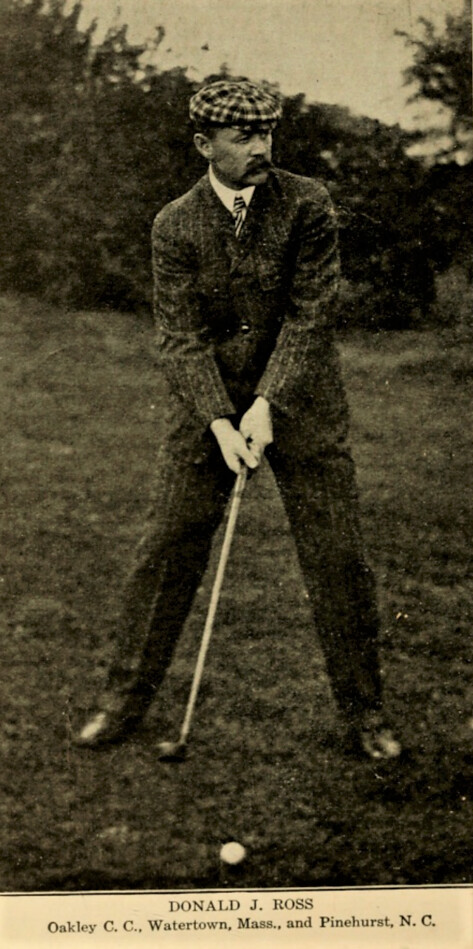
Harvard Professor Robert Willson visited Dornoch in the summer of 1898. It was then that he persuaded Ross to consider relocating to Boston and take up the position of Oakley’s Professional. With the support of John Sutherland, Ross made the move in 1899 and immediately began a redesign of Oakley which continued until 1910. When the course closed for that winter Ross set up an indoor teaching facility in Boston. By happenstance, one of his students was a lawyer for James Tufts who had five years earlier founded the Fredrick Law Olmsted designed Village of Pinehurst in Moore County North Carolina. After meeting Tufts, Ross was then persuaded to take a position as the winter professional at Pinehurst. It was a lucky outcome for golfers past and present when Harry Vardon, for reasons unknown, declined the position as Pinehurst’s professional!
Much of the early efforts of Ross at Pinehurst no longer exist due to considerable revisions over the decades. For instance, #2 wasn’t “finished” until the sand greens were replaced with grass in time for the 1936 PGA Championship. Despite his great success at Oakley, it was the 1909 promotion to Head Professional at Essex CC in Massachusetts which set the design career of Ross off and running. The job of Head Professional, which lasted four years, focused mainly on the redesign of the course and afforded Ross opportunities to visit other courses to sell his services. That in no way meant Ross didn’t devote much time to the course. As was the case at Pinehurst #2, Ross lived on the course (15
th hole at Essex and 3
rd at #2) and made continual improvements. Indeed, Ross didn’t complete the Essex redesign until 1917 and it remains one of his most distinctive courses.
The experience Ross gained while playing The Old Course as a young man wasn’t lost on the man as an architect. Two fundamental elements ring true at #2. First, the prominence of short grass around greens making play within 50 yards of the hole, often over bumpy terrain, a key to scoring well. Second, offering calculated risks from the tee while still providing gateways for rabbits in the guise of wide fairways. Ingenuity, inspiration and imagination are the hallmarks of #2, just as it is so with TOC. It is remarkable then that it should be the newcomer that has taken the pole position in regards honouring these elements. Perhaps the powers that be in St Andrews should consider engaging Coore & Crenshaw to breathe life back into the 16
th and 17
th. The narrowing of fairways on two of the most famous holes at the Home of Golf is surely one of the biggest architectural miscues of the 20
th century.
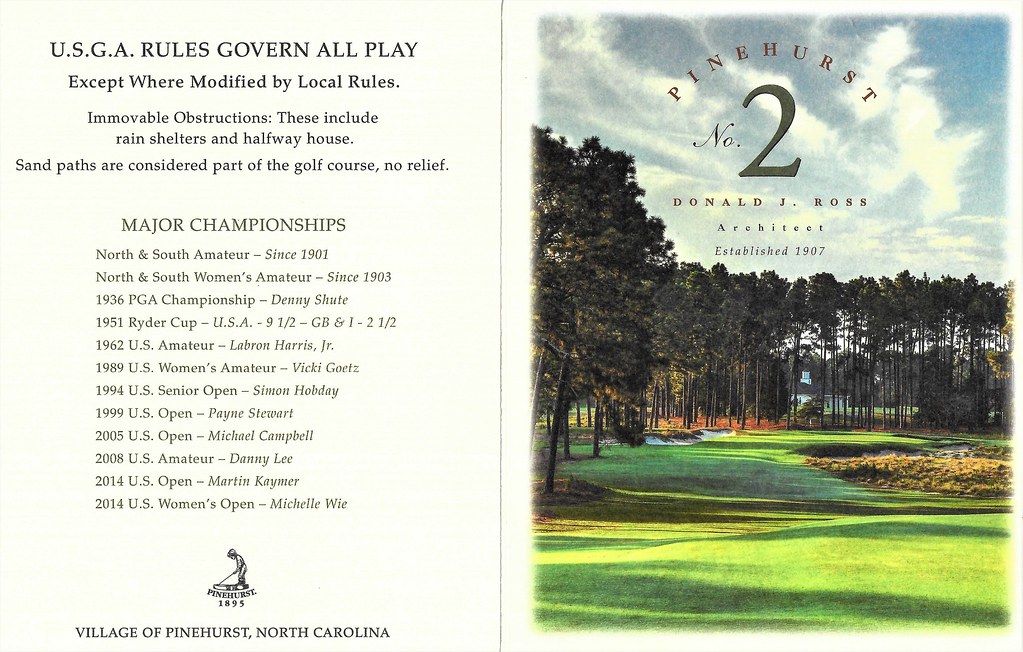

For anyone who played the pre-Coore & Crenshaw renovated #2, the 1st will come as a shock. It is immediately apparent that the relationship between the previous wall to wall bermuda mess and the sandy waste areas of today is negligible.
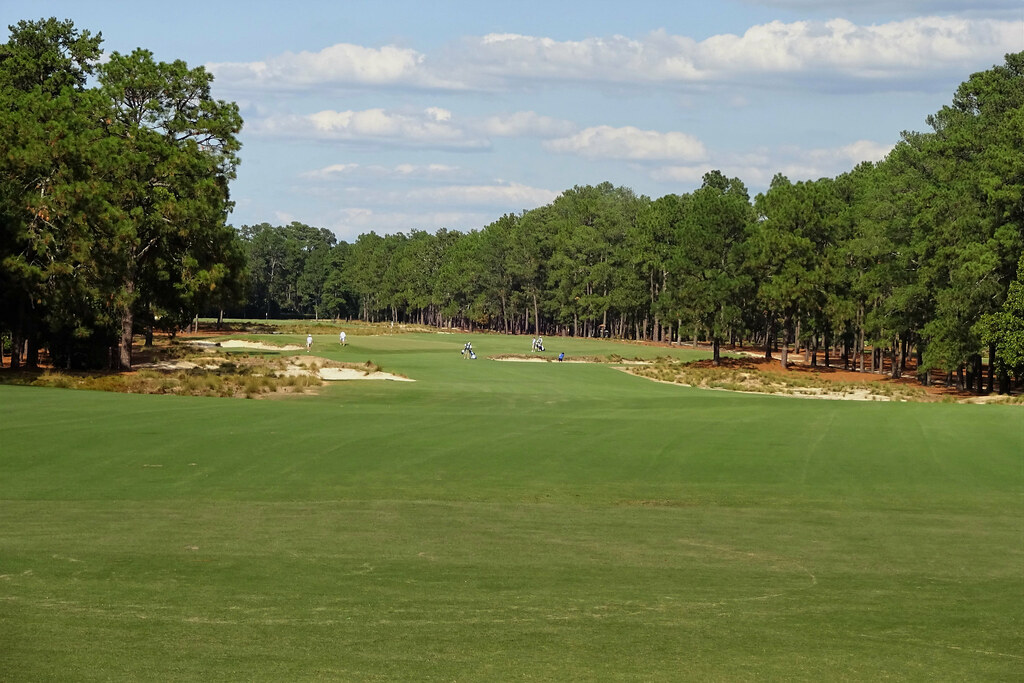
The turtleback greens haven't been changed!
[url=https://c1.staticflickr.com/5/4430/36795166470_297a358be3_b.jpg]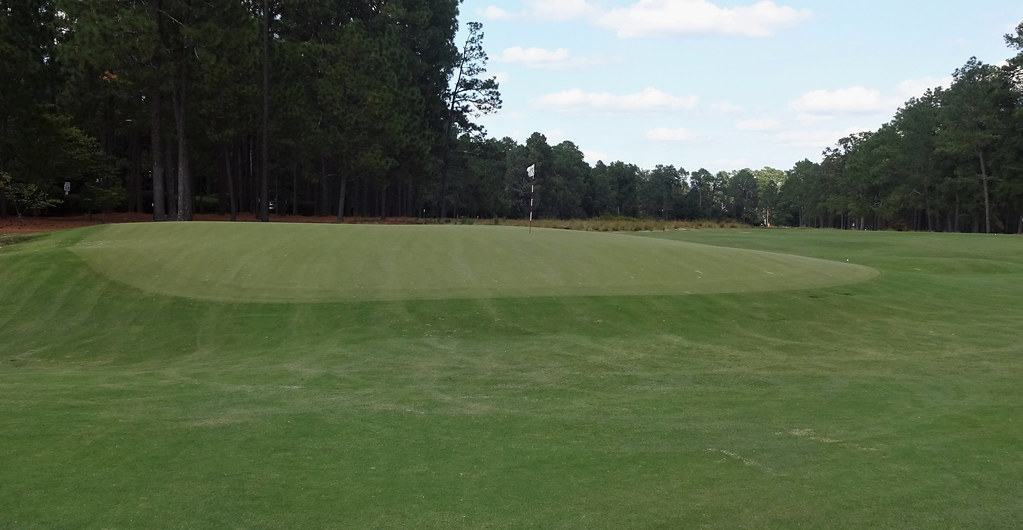
The interest off the tee is readily apparent where previously Pinehurst #2 was visually and strategically far less engaging.
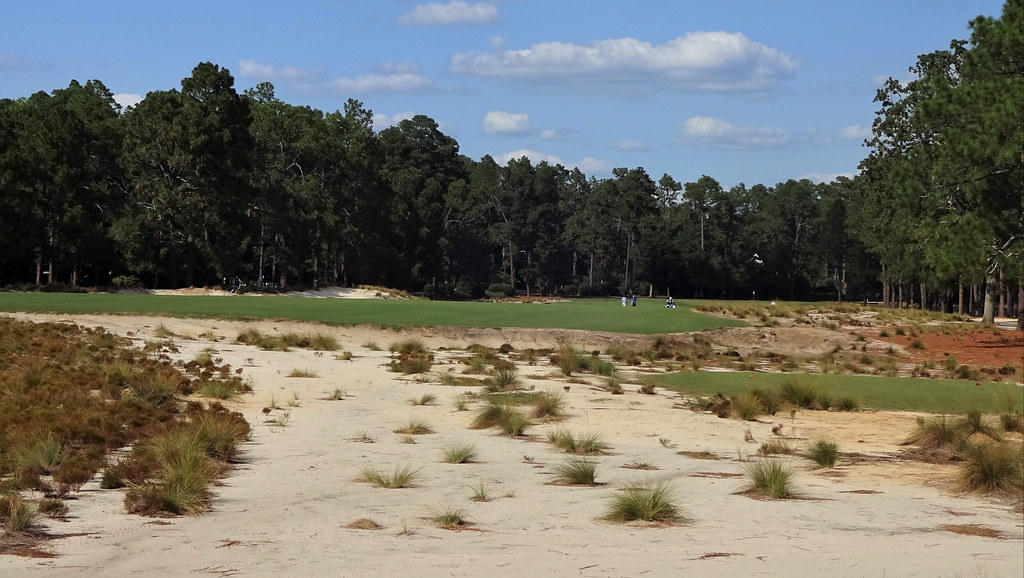
A few photos of the 2nd from 1936 North-South Open. Behind the green.

Putting at 1936 North-South Open as seen from back of green.

The removal of 35 acres of grass made it feasible to create two heights of grass on the course; the green height and everything else. But that is not all that makes the front nine one of golf's great unsung masterpieces....holes 3-5 are as good as Sunningdale New's 4-6 run. Anyone acquainted with me will know how much I revere that stretch of golf. #3.
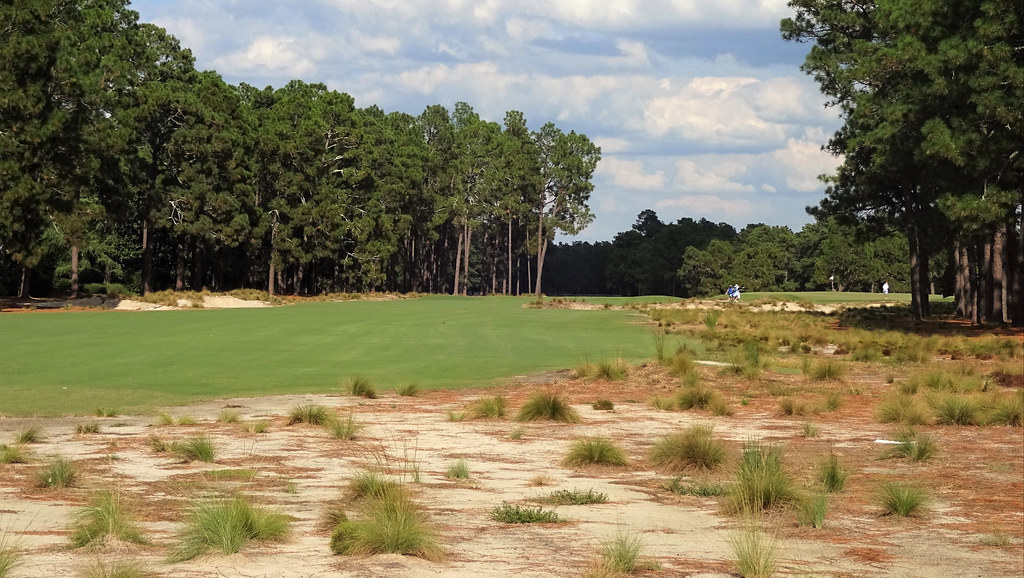
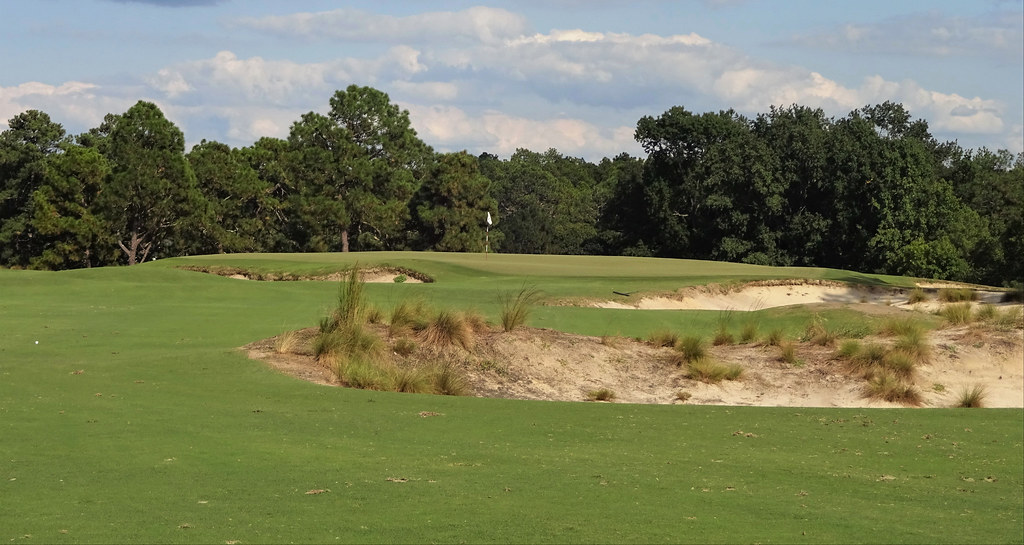
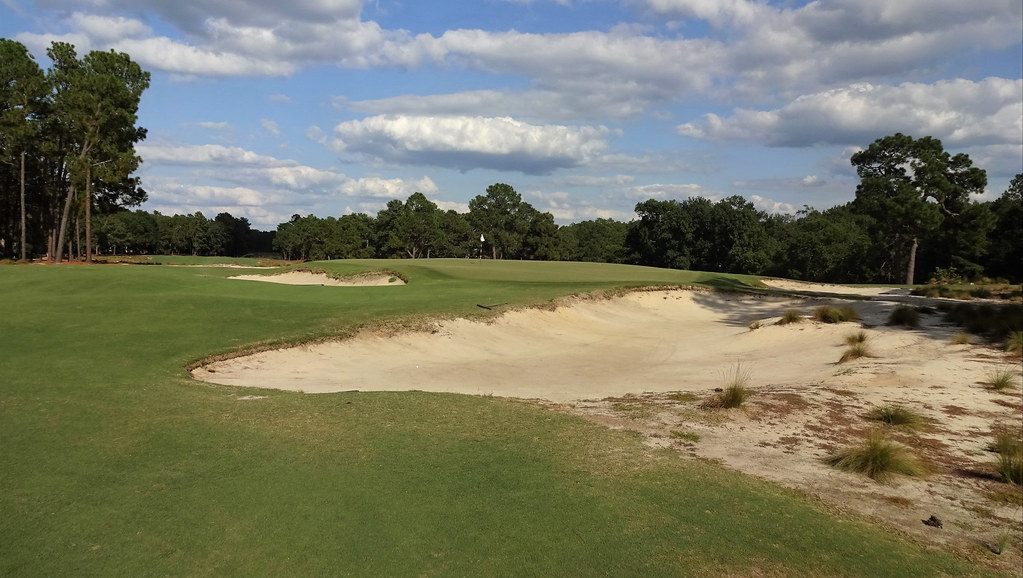
More to follow.